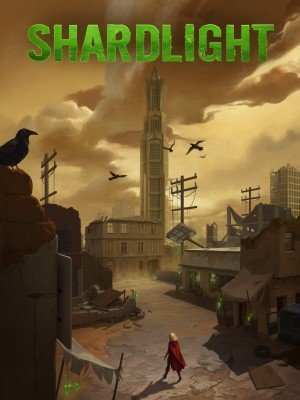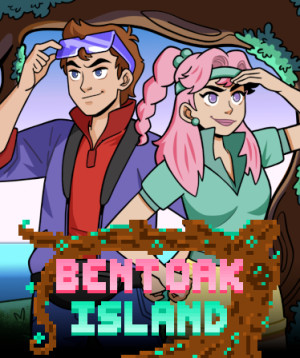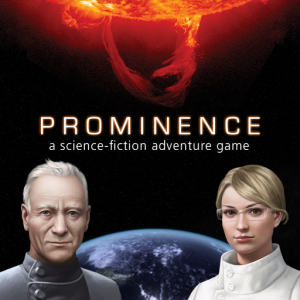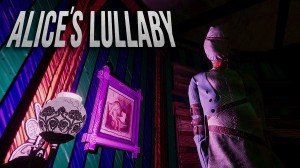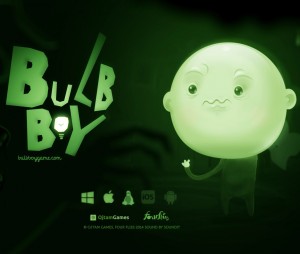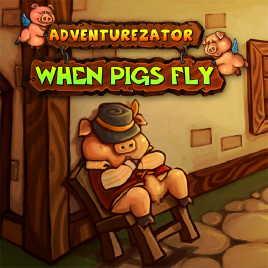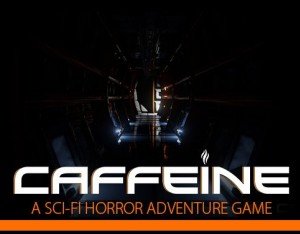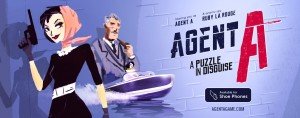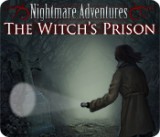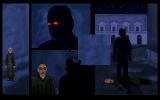Review for Shardlight

Twenty years after the bombs fell. Ruined buildings in a blasted landscape, disease running rampant, and... dandies in porcelain masks? Flintlock pistols? Shardlight, the latest sci-fi title from Wadjet Eye, presents a stylish and uniquely retro take on the apocalypse, full of interesting characters, diverse locations and a host of lovely little touches. The story may flag a bit in the second half and stumble to a rushed conclusion, but this is still a memorable experience in a world I would be glad to revisit.
Amy Wellard has only two things on her mind: finding the last few parts to fix up the classic car she's been working on for years, and winning a cure for her Green Lung. Ever since war irradiated the world, Green Lung has been endemic. There is a vaccine, but it's jealously guarded (just like everything else) by the ruling Aristocracy with doses offered up only as prizes in the vaccine lottery. And you can't just buy tickets, you have to earn them by taking on the kind of jobs nobody else will do. Jobs like fixing a malfunctioning reactor, a task which has already left one man fighting for his last breaths.
While the lucky few live in grand houses surrounded by the best of everything – including all the vaccine they need – the rest of society huddles in the shattered remains of bombed-out cities, scavenging for whatever is usable and struggling to grow anything at all in the poisoned land. Resources such as medicine, energy and even knowledge are tightly controlled by the Ministries, which answer only to the Aristocracy. The scent of revolt is in the air, but after the brutal quelling of previous rebellions by government forces, the resistance has gone underground, biding its time. Until now, Amy has been content to just eke out a living, helping her friends and working on her car, but a dying man's last request to deliver a letter soon draws her into the more rebellious side of the family business and the shady world behind the Aristocracy's opulent facade.
As if that wasn't enough to contend with, the Reapers are lurking around every corner. Not quite a death cult, they believe it is a blessing to be taken by their grim namesake, to die and be freed from this awful world. They also believe red-eyed ravens are harbingers of the Reaper and will flock to those about to die. Congregating in a ruined cathedral and consisting mainly of those dying of Green Lung, they pray to the Reaper for swift release and celebrate each other's passing. Is this mere superstition, faint hope and comfort for the doomed, or is there something more going on here? When Amy, badly injured, is apparently visited by the Reaper, she becomes determined to find out.
The world of Shardlight is unique. Sure, it's yet another post-apocalyptic dystopia, but it's a dystopia with style. Even though it's set in the late 21st century, two decades after a nuclear war, everything in it harks back to the past. From the architecture to the broken-down cars, you could believe the bombs dropped in the 1950s, not the 2050s. Then there's the Aristocracy, who've borrowed their sense of style directly from the French Revolution, and their idols (and names) from the Romans. Their leader goes by Tiberius, while the head of the revolutionaries – in a nod to her French counterparts – is Danton. The Reapers, in turn, prefer to revel in Victoriana, with their formal black coats and top hats. Yet despite all that, a sprinkling of more futuristic technology, such as a touch-screen navigation system and a reactor-in-a-jar, reminds you that this is indeed the future, albeit a future obsessed with the past. This is a game steeped in history, even as its characters appear to have forgotten history's most important lessons.
All this is backed up with a top-notch presentation, and the graphics really sparkle with light and life. The low-res retro aesthetic may not be for everyone, but it has rarely been used better than it is here. Every scene (pixels aside) looks hand-painted and is full of little details and flourishes. This is a broken-down world being slowly reclaimed by nature, with crumbling buildings and tattered flags but also flowers growing through the cracked pavement and even a tree bursting through a roof. A sign smashed against a building shows its internals, while walls are covered in posters for everything from a decades-old Julius Caesar production to government propaganda messages.
There's also a glorious variety of locations to explore, from the Fallout-esque underground bunker you start in, through a crumbling city market with a hint of North African medina about it, to the old-world charm and opulence of the Aristocrats' palaces and mansions. The dominant colour palette of beiges, browns and a sort of queasy yellow stands in stark contrast to the typical sci-fi neon and chrome environments and gives the game an old-fashioned, earthy feel. That yellow tinge also ties in nicely with the sickness, both of the society and its people.
Such a muted colour scheme could easily have turned out dull and bland, but here it's neatly broken up by shafts of sunlight, some glorious sunsets and the ever-present shards, the fragments of glowing radioactive uranium glass that give the game its name. Every screen is full of life, too, with signs and flags fluttering, windmills spinning and water rippling. The market, in particular, bustles with pedestrians and customers, with literally dozens of them going about their business around you.
Even the title screen deserves special mention. In a view over a blasted landscape, the options are presented as shards hanging from a branch. Start a new game, though, and that scene seamlessly becomes the beginning of the intro cinematic: the option text fades out, the camera starts to pan and off we go. That scene ends with Amy climbing down into the bunker and then you're in charge; from clicking "new" to taking your first actions there are no breaks or cuts. It's very slick, and makes you feel just that bit more immersed in the world. Right away you can really feel the care and attention to detail that's been lavished on this game.
In fact, wherever you turn you find extra little worldbuilding touches that go above and beyond what is necessary just to tell the story. My favourite example is a group of children outside Amy's workshop. They're skipping rope and singing rhymes, except instead of “Ring a Ring o' Roses” we get charming takes on Green Lung and the Reapers. Amy can talk to them, learn a little about their lives, even ask to join in, skip for a bit herself and sing her own medley of songs. There's no need for them to be there – they're not involved in the plot or any of the puzzles and you can totally ignore them if you want, but they do so much to draw you in and make this feel like a real place, full of real people.
Combined with books you can choose to read (or not), Ministry announcements playing in the background and a host of characters that are willing to chat and tell you about themselves, Shardlight does a great job of rounding out its world without relying on infodumps or forcing you to wade through it all if you don't want to. Even after characters are seemingly done with you and you're ready to leave an area, you'll often be able to turn around and talk to them again, helping to flesh out the consequences of your previous actions. If you so desire, for example, you can find out how a farmer's crops fared, or whether a woman's baby was born healthy. Conversations also frequently give you different ways to express yourself, and even though it doesn't change the overall outcome, it does give a welcome feeling of agency and encourage you to put yourself in Amy's shoes.
The soundtrack, too, is inspired. Mainly guitar-led but rounded out by piano, bass and drums, there's a worn-out weariness to it, a calm that stops just short of hopelessness. The plaintive solo acoustic guitar picking of the marketplace gives way to electric guitar and more of a rock feel during moments of danger, while your infiltration of a wealthy backer's mansion has the tension of a heist caper. Every track fits comfortably into its environment. The voice work is also of a high standard overall, but it can't always carry the weight of emotion that's sometimes required. When it comes to everyday banter the performances come across as natural and unforced, but there are a few pivotal Grand Guignol moments where they just don't nail the charisma needed to carry the scene. Some of that may be down to the writing, but there are times when the voice-overs need to be great and end up just being fine.
Controls are very standard, particularly if you've played any other Wadjet Eye game: right-click to look, left-click to interact, with an inventory/options pane that drops down from the top of the screen. It's clean and simple and has become the developer’s default scheme for good reason. The only minor oddity is that the title screen doesn't include an option to continue the game, just to start a new one or load from a save. If you didn't save on exit, the game autosaves for you and you can load that file, but it seems a little inelegant, especially given how carefully designed that screen is otherwise.
The puzzles are mostly about pacing your progress rather than making you think particularly hard. With a handful of exceptions, so long as you look around carefully and don't miss anything the solutions are pretty straightforward and don't require any fancy item-combining. There's no real pixel hunting as such, but given how detailed the scenes are it can be tricky at times to spot useful items in amongst the general clutter; a hotspot highlighter would have been handy. Almost all obstacles are item-based, with a few minigames sprinkled in that require you to wield a crayon or chalk or play with a device until you unlock it. There are a couple of more satisfying puzzles, asking you to do your research and either gather materials or work out what to do with what you've learned. It's a shame that there weren't more of these; Amy's a mechanic and presumably used to tinkering with broken-down devices, so not giving her a chance to actually do much of that feels like a real missed opportunity.
One puzzle is neat in theory but finicky in practice. You need to draw out a pattern on a chalkboard to reveal a clue, and you get to draw it (or anything else you fancy) freehand, which is fun. The only problem is that if you draw the pattern a little sloppily (as I did) you can still make out the clue, but the game doesn't recognise you've done it. That means that when you go to perform an action based on the clue, the game teasingly accuses you of cheating and refuses to play ball. I had to redraw the design three or four times before it cottoned on.
Unfortunately, all of Shardlight's careful worldbuilding and rich atmosphere can't hide the fact that the actual plot is a bit lacking, particularly in the second half. For example, you're working to bring down the Aristocrats' selfish regime and free the people, but Tiberius apparently does very little to stop you. He makes some token efforts here and there, but there's really no feeling of tension or building threat as you head towards the climax. Likewise, after filling the first half of the game with enigmatic hints about the Reaper and his red-eyed ravens, the secret is just suddenly dropped on you rather than being teased out for all it's worth. Finally, instead of being the tense climax to a taut game of cat-and-mouse, the ending just feels perfunctory.
On top of that, the two leaders, Tiberius and Danton, are intended as more than mere archetypes of good and evil, but the game does little more than sketch that in. It never makes you feel for Tiberius or really sympathise with his point of view, and only hints at what Danton's fervour could lead to. For all that the world itself is carefully realised, the power players within it and the reasons why it came to be the way it is, are not. That's frustrating, particularly given that these motivations play heavily into a crucial decision you're called on to make in the finale.
The pacing could be better as well. The early stages of the game are quite relaxed, as you get to know your surroundings and the people in it. Things pick up towards the middle as you get on the scent of a secret the Aristocrats are desperate to hide, leading to a few genuinely tense scenes. But just as it feels like the game is hitting its stride you're literally stopped in your tracks, and by the time you've recovered all the momentum is gone. After that it's back to quiet exploration, followed by a somewhat abrupt conclusion. It's unfortunate, too, that after spending the initial portion of the game getting to know Amy's friends, they just kind of fade away by the end.
Even with its narrative inconsistencies, however, the imaginative world and the way you're drawn through it as the game unfolds over its 6-8 hours of playtime make Shardlight's journey more than worthwhile. Even if you'll struggle to remember much of the plot after you’re done, the characters you've met, the scenes you've witnessed and the places you've been will linger in your memory for quite a while. The story wraps up neatly, but I still hope for a sequel, just for the chance to go back and see how Amy and her friends are adjusting to the new world they've made. And perhaps that's all the recommendation that really matters.
WHERE CAN I DOWNLOAD Shardlight
Shardlight is available at:
We get a small commission from any game you buy through these links (except Steam).Our Verdict:
Shardlight manages to build its quirky post-apocalyptic world into something that will leave a lasting impression, though the same can’t be said for the story it tells.
You don't want to miss these articles
Adventure Gamers Community
Community reviews for more Adventure Games (randomly selected)
Review of Ben Jordan: Paranormal Investigator - Case 7: The Cardinal Sins
Rating by Niclas (Nov 6, 2012)
Review of Ben Jordan: Paranormal Investigator - Case 7: The Cardinal Sins
Rating by Niclas (Nov 6, 2012)


